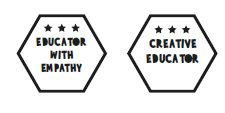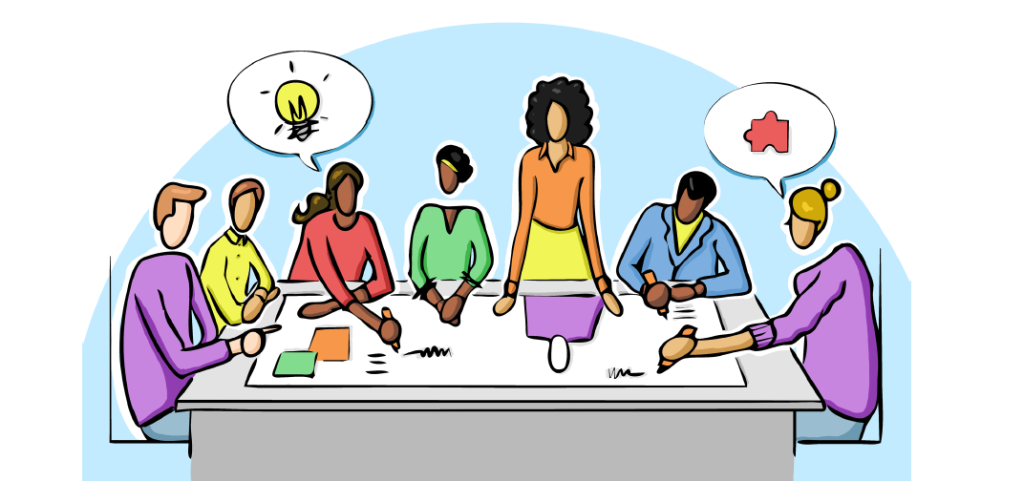
We are now moving onto the co-creation stage when we will involve the students more actively in this review process. By now you have equipped yourself with a lot of facts, interesting findings, understanding of the bigger picture and this is the right time to redirect your attention to who the programme is for, your students. As a true designer, the student experience as well as the experience of your programme team will be your priority and you will maintain the information you have about the “programme human” always up to date.
Many educators believe they know everything about their students. In this section we will challenge this statement. As a designer, you will always want to assume the “beginner’s mind”. This means that you will start with a completely open mind and willingness to learn about who your students really are. You have some useful information from the previous stages that will now be complemented with your students’ personal insights.

To be able to really get to know your students, we will encourage you to run a co-creative and participatory workshop with your whole cohort of students, if at all possible. The outcome of the workshop will be a series of student personas that your students will create in groups. These representations of the student cohort will provide you with very valuable information about the hopes and dreams, the fears and frustrations and the motivations and aspirations of your students.
The main objective is to get into the shoes of your students, practice true empathy and approach this in a non-judgmental and exploratory manner. At this stage I have a little teaser for you. Before you do the workshop with your students, sketch out our own personas of your students. After the workshop, compare and see if you really knew your students that well.
1
Incorporate the session into the timetable so that the students know it is coming – ideal timing is at least three months into the programme when the students know each other (note: this does not work as an induction activity)
2
Welcome the students and explain the purpose – emphasize that you are interested in their motivation for study and their experience on the programme. Let them know that they are being a part of the programme improvement and that their voice matters.
3
Ask the students to split into groups of 4 as they wish to work with their friends
4
You can start with a little ice breaker quiz – pose question about the cohort – e.g. How many of us are from Mumbai? How many birthdays do we celebrate this month? – lighthearted questions about the cohort that you know the answer to. You can even give out small gifts to groups who get the answer right. That will establish a good feel and friendly atmosphere.
5
Now onto the persona – ask the groups – Please, make me a typical student of. You can give out the Learner’s persona template or a list of questions based on these areas adapted to your needs. Encourage students to use material that you have prepared on their tables. Get them to choose a photograph of their student persona and ask them to give the persona a name. Getting started with information about the persona’s age, family, friends and hobbies will get them going.
6
Move around and see how the groups are getting on. Encourage them to explore the more challenging areas related to their fears, motivations, frustrations. Using emoji stickers helps at this stage.
7
Ask each group to put their persona on the wall (or hold it up) and present it to the rest of the cohort. Prompt with questions and get other to ask questions as well. Finally ask – How many students like this we have in the cohort? 20%, 10%?
8
After each presentation you can ask – Does anybody have a similar student to the one just presented? And keep going till all personas have been presented.
Tips: From your previous research and from what you know about the programme, you may have an area of improvement you wish to focus on – for example Careers and Employability support. You can adapt the persona questions to get into the topic you want to address – for example – What is the career aspiration (of your student persona)? What is the expectation from your family (of your student persona)? In this way, students will provide you with more targeted information.
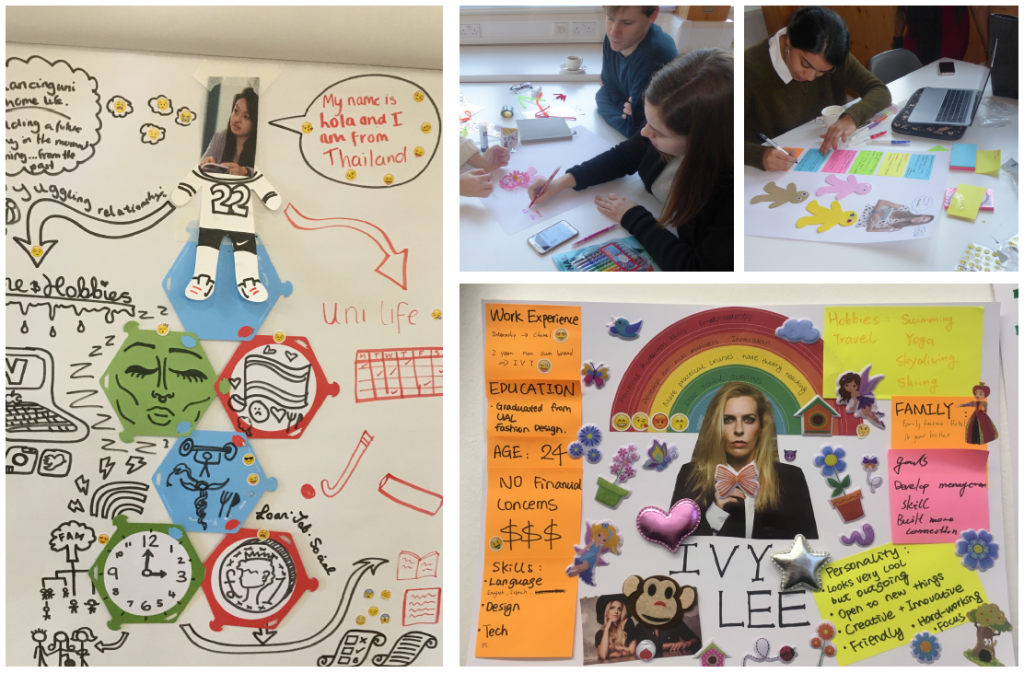
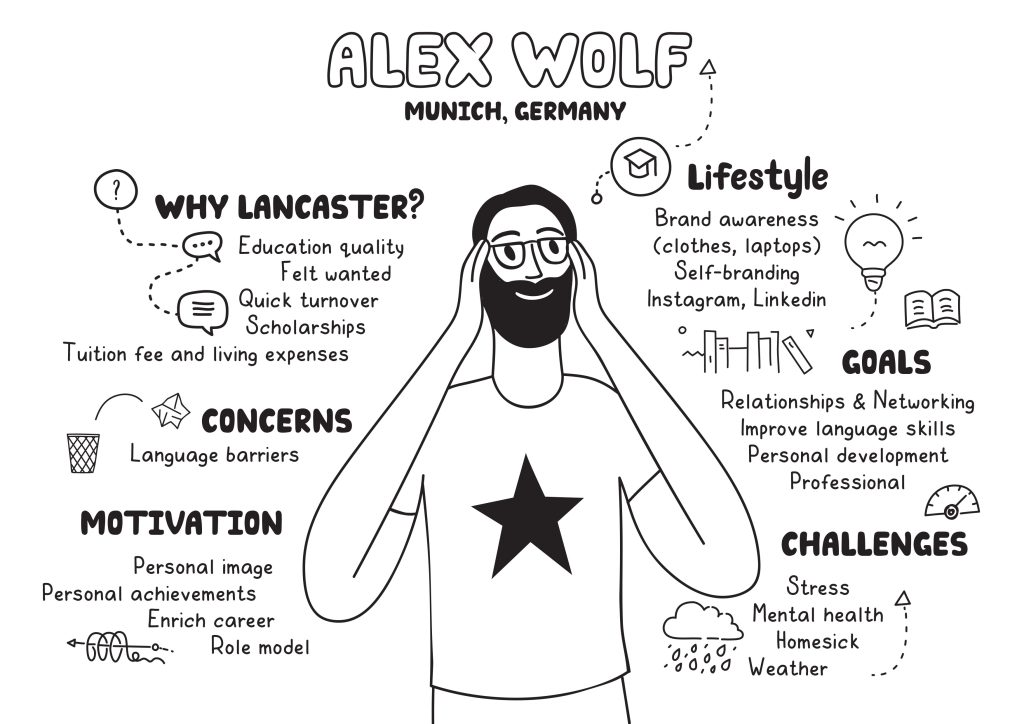
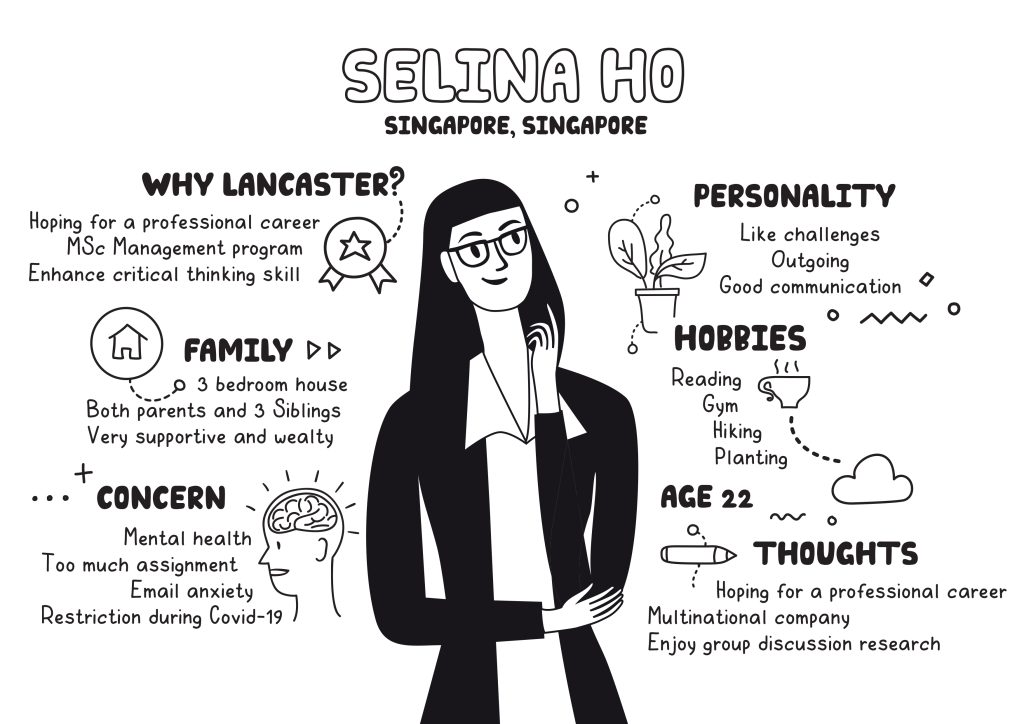
Student groups will create a number of personas representing the cohort. From the personas you are likely to start getting better understanding of student needs, technology they use, barriers to success, worries, etc. Students do enjoy this activity as it gives them an opportunity to express themselves through a persona profile that contains a collation of their own feelings but they do not feel as exposed personally. You can now also validate your own personas and compare with the students’ creations.
Has anything surprised you?
Co-creating student personas with your cohort will have a significant impact on how you think about your programme experience and how you may be able to design for the student needs you have identified. You may see some reoccurring patterns that will be common for most of your students and those will be important to note and investigate further. It is useful to verify some of the patterns you learn from the persona profiles with other feedback and information you have previously collected.
Your programme administrators, student support team or admissions team may be able to verify some of these insights and they may have useful additional detail to add.
Co-creating personas gives everybody a voice and students do not feel constraint about providing insights they may not usually be willing to share. Service design constantly encourages us to take a user-centred approach and the personas provide educators with further tacit and latent knowledge that comes to surface through the persona profiling.
The persona profiles acknowledge consideration for the learners’ individual qualities and attitudes during curriculum planning. They provide a path to strategic realignment of curriculum, services, governance, and communications targeted at learners’ needs and ultimately impact the quality of the student experience and improved learner satisfaction.
Service design approach also helps us cut the elephant into smaller chunks. Let’s apply the power of 3 and before we move to the next section, let’s reflect and note down our learning:
And finally, celebrate a small victory! You have earnt your first badge in this section.
